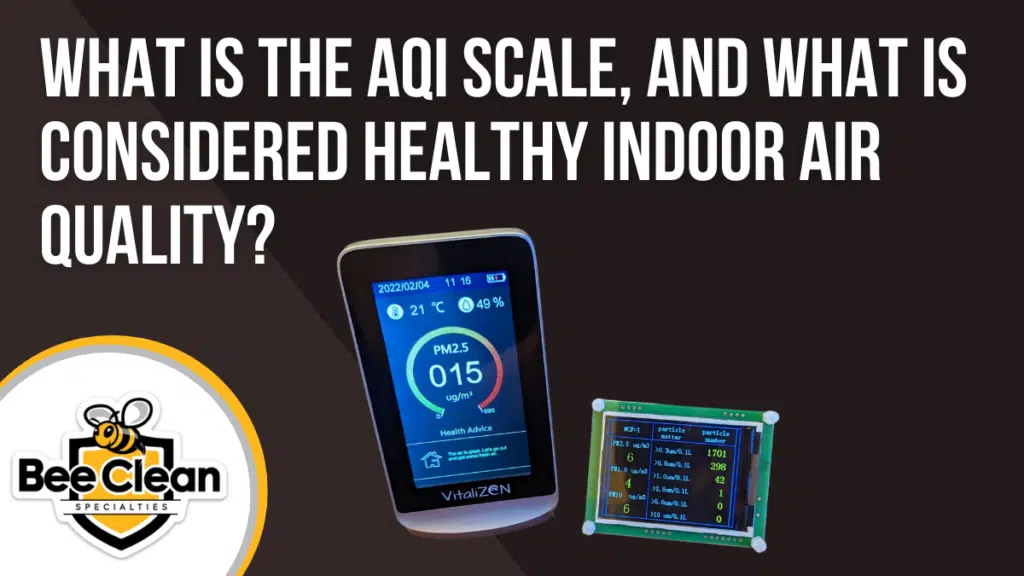What is the AQI Scale, and What is Considered Healthy Indoor Air Quality?

What is AQI?
The AQI (air quality index) scale was developed by the EPA to deliver a simple quantitative measure of common air pollutants. An AQI index typically includes the measurement of:
- Ozone
- Sulfur dioxide
- Nitrogen dioxide
- Carbon monoxide
- Fine particulate matter
Fine particulate matter can be classified into multiple different categories, but it is commonly measured in two groups; 2.5 µm (micron) and below, and 10 µm – 2.5 µm. With all these measurements taken together, it provides a wholistic view of the air quality with just one number.
What is a Good AQI number for my factory/shop?
AQI is in many different applications, including weather apps to tell you what the outside air quality is in your area. The AQI scale goes from zero to 500 and is typically broken down into the following categories:
- 0-50: Good – Air quality is satisfactory and poses little or no risk.
- 51-100: Moderate – Air quality is acceptable; however, there may be a concern for some people who are unusually sensitive to air pollution
- 101-150: Unhealthy for sensitive groups – Members of sensitive groups, such as children, the elderly, and individuals with respiratory or heart conditions, may experience health effects. The general public is less likely to be affected.
- 151-200: Unhealthy – Everyone may begin to experience health effects, and members of sensitive groups may experience more serious health effects.
- 201-250: Very Unhealthy – Health alert: everyone may experience more serious health effects.
- 301-500: Hazardous – Health warning of emergency conditions; the entire population will likely be affected.
(“AQI Basics”)
While these numbers are typically used for outside air quality, that you would expect to be clean and safe, poor indoor air quality will cause the same negative effects, a good target number would be to consistently achieve less than 100 on the AQI scale.
How can I tell what my AQI Index is?
There are many companies that provide air quality testing, Bee Clean Specialties being one of them. Simple handheld meters that measure AQI, are also available online for under $100. These are a good investment if you are trying to regularly track AQI. Using a meter is important, because the size of the particles being measured are invisible to the naked eye, so the air may not appear to have a problem, even though it has a high AQI.
Is an AQI of under 100 Achievable?
Some industrial processes can create a large amount of small particles, and with improper air filtration, it may seem impossible to achieve less than an AQI below 100. With a proper analysis of your process, and pollutants, an air filtration system can be selected that can achieve less than 100 AQI. We have assisted companies in the cold forming, and high-speed precision CNC machining, as well as companies in other industries to achieve Good or Moderate air quality. Depending on the air filtration equipment that you currently have, we can help you achieve this through proper maintenance, system redesign, or through-out the installation of additional filtration equipment.
Work Cited
“AQI Basics.” AirNow.gov, https://www.airnow.gov/aqi/aqi-basics/. Accessed 21 September 2023.